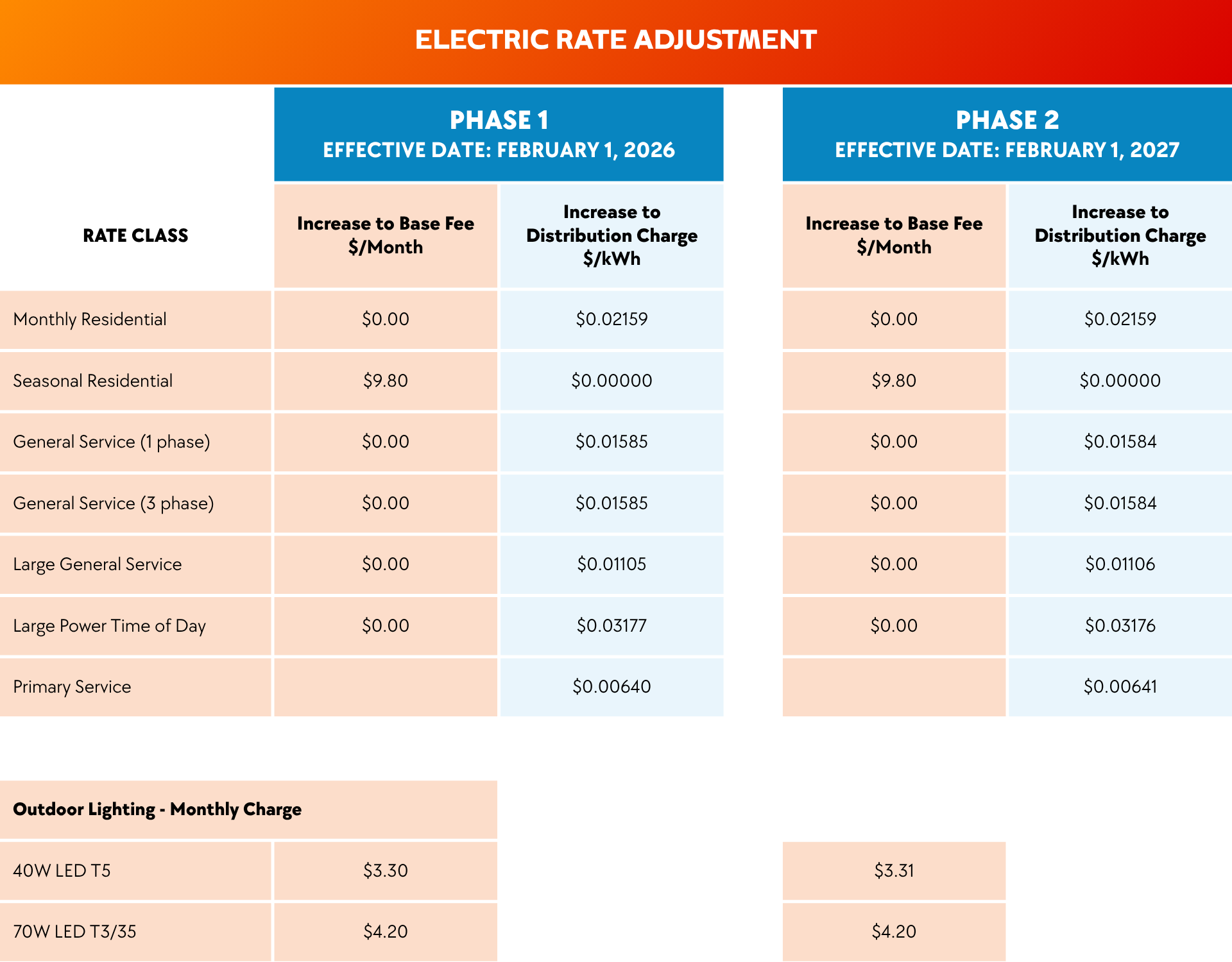Reliability and preparedness are essential to our cooperative utility’s operations, and PIE&G members have made clear that the ability to withstand and recover from storms must remain a top priority.
This page is dedicated to how we will meet our members’ needs for reliable and affordable service while navigating long-term challenges.
RELIABILITY STRATEGY
We’ve carefully analyzed our response to the March 2025 ice storm and other recent outage events to determine where to invest in our system to prevent outages and how to restructure our outage response to best reduce downtimes when they occur. Possible solutions are upgrading our poles, investing in higher-quality wire that can handle growth into the future and better technology and smartly investing in burying our lines underground where it makes economic sense.
FINANCIAL CONSTRAINTS
Just as rising costs are hitting your own households, PIE&G is facing supply chain challenges, rising wages to keep up with the cost-of-living, and higher interest rates.
RATE CHANGES
Addressing member needs for reliability and system improvements with rising costs is a careful balancing act. To meet these needs, the PIE&G Board of Directors reviewed a long-term forecast and approved two-phase rate adjustment that will occur in February 2026 and February 2027.
This approach balances two goals: continuing to invest in the reliability you expect while keeping bills as low as possible.

